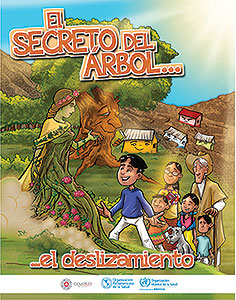
I
n September 2014, PAHO and the Pacific Northwest Border Health Alliance (a cross-border and cross-jurisdictional public health preparedness and response network in the Pacific Northwest of the U.S. and Canada) convened a Hemispheric Consultation on Engaging Indigenous Peoples in Disaster Risk Reduction. The region-wide dialogue yielded consensus on a number of strategies for moving this initiative forward, including: participation and partnerships; education and raising awareness; legislation; disaster risk reduction and preparedness plans; and the use of traditional knowledge. The participants (from 11 countries in the Americas) endorsed recommendations for action for national authorities, indigenous populations and the international community, which have been compiled into the report “Recommendations for Engaging Indigenous Peoples in Disaster Risk Reduction.” Read the complete report and recommendations at: http://bit.ly/1qRczzf.
Following the meeting, one of the participants, Cecilio Solís, Director of the Indigenous Federation of Corporations and Local Communities, met with with 30 leaders of indigenous communities in the northeast Sierra Madre region of the state of Puebla, Mexico, to complete questionnaires and share experiences related to hazards in the region. This led to the development of a disaster risk management plan, with a focus on flash floods and landslides. The project has two principal components:
- Development of community preparedness and emergency response plans to:
- Address basic concepts of disaster preparedness and risk reduction.
- Raise awareness among leaders of the importance of community organization for sudden-onset floods and landslides.
- Develop a matrix of phenomena and hazards affecting their community.
- Develop community risk maps.
- Risk Communication: Radio messages on disaster prevention were recorded, addressing hydrometeorological (floods, flash floods, cyclones) and geological (landslides) phenomena, in seven indigenous languages: Nahuatl, Totonac, Tarahumara – Mayan, Tzeltal, Tlapanec, and Mazateco. Cartoon booklets were also prepared to educate children on the issue of unstable slopes and potential landslides.
| Preparedness and Response Training |
|
Risk Communication |
|
In addition to training and empowering community leaders to play a key role in emergency preparedness and response, the workshop also strengthened ties between the local populations and national and international agencies such as Mexico’s National Disaster Prevention Center (CENAPRED), Civil Protection of the State of Puebla, the National Emergency Medical System, and UNDP’s Risk Reduction Program in Mexico.
